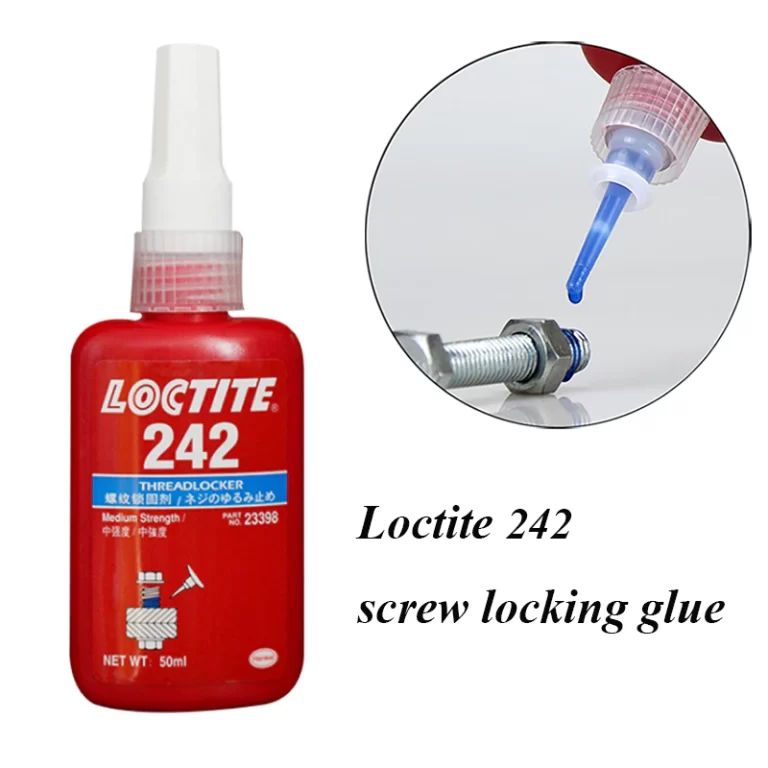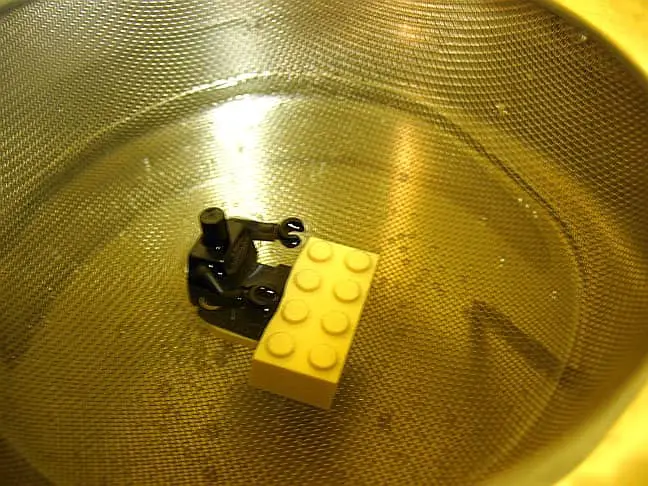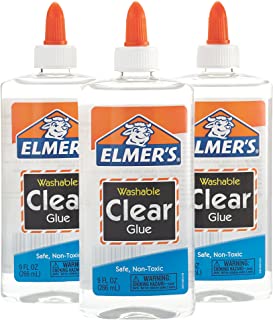Best Epoxy For Plastic Radiator Repair
Epoxy is a two-part adhesive made of a resin and a hardener that, when combined, form a strong and durable bond. It is commonly used for plastic radiator repair as it can bond and seal plastic surfaces, making it an ideal solution for repairing cracks or leaks in plastic radiators.
To repair a plastic radiator with epoxy, the first step is to clean the surface of the radiator to ensure a strong bond. Then, the resin and hardener are mixed together and applied to the damaged area. The epoxy should be applied in thin layers, allowing each layer to dry before applying the next. This will ensure a smooth and even finish. Once the final layer has dried, the repair should be sanded and polished to restore the original surface texture.
Read More :- Epoxy for Plastic Gas Tank Repair
It is important to note that epoxy is not a flexible material, so it may crack if the plastic radiator is subjected to stress or movement. Therefore, it is important to carefully consider the location and size of the repair when using epoxy for plastic radiator repair.
Overall, epoxy is an effective solution for repairing plastic radiators, as long as the repair is carried out carefully and with attention to the limitations of the material.
Also Read:- Epoxy for Plastic Bumper Repair
Guide on Using Epoxy for Plastic Radiator
To repair a plastic radiator with epoxy, it is important to choose the right product for the job. There are many different types of epoxy available, and some are better suited for plastic radiator repair than others.
Here is a guide to help you choose the best epoxy for plastic radiator repair:
- Two-part epoxy: Look for a two-part epoxy, which is made of a resin and a hardener that are mixed together before application. This type of epoxy provides a strong and durable bond, which is essential for repairing a plastic radiator.
- Plastic bonding epoxy: Choose an epoxy specifically formulated for bonding plastic. This type of epoxy is designed to provide a strong bond to plastic surfaces and will be more effective than a general-purpose epoxy.
- Heat resistant epoxy: If the plastic radiator is located near a heat source, it is important to choose an epoxy that is heat resistant. This will prevent the repair from cracking or melting when exposed to high temperatures.
- Clear epoxy: Consider using a clear epoxy to make the repair blend in with the surrounding plastic. This will result in a more aesthetically pleasing repair that is less noticeable.
- Easy to use: Opt for an epoxy that is easy to mix and apply. A product with a long working time will give you plenty of time to make the repair, and a fast-drying formula will allow you to move on to the next step quickly.
Once you have chosen the right epoxy for your plastic radiator repair, here is a basic step-by-step guide to help you make the repair:
- Clean the surface of the radiator: Clean the surface of the radiator thoroughly to remove any dirt or debris. This will ensure that the epoxy bonds to the plastic effectively.
- Mix the epoxy: Follow the instructions on the product label to mix the resin and hardener together.
- Apply the epoxy: Use a brush or spatula to apply the mixed epoxy to the damaged area. Apply the epoxy in thin layers, allowing each layer to dry before applying the next.
- Sand and polish: Once the final layer of epoxy has dried, sand the repair to restore the original surface texture. Then, polish the repair to remove any rough edges or bumps.
By following these steps and using the right epoxy for your plastic radiator repair, you should be able to make a strong and durable repair that will last for many years.
J-B Weld 8237 PlasticWeld Plastic Repair Epoxy Putty
J-B Weld 8237 PlasticWeld Plastic Repair Epoxy Putty is a two-part epoxy putty specifically designed to repair plastic radiators and other plastic parts. It is a versatile product that can be used to repair a wide range of plastic materials including PVC, ABS, polycarbonate, and more.
One of the key advantages of J-B Weld 8237 PlasticWeld is its strength. The epoxy putty sets to a hard, durable material that is resistant to heat, impact, and chemicals. This makes it ideal for repairing plastic radiators that are exposed to high temperatures and harsh conditions. The putty can be molded and shaped to match the original plastic part, ensuring a seamless repair.
Another advantage of J-B Weld 8237 PlasticWeld is its ease of use. The two-part epoxy is mixed together by kneading the two components together until they are fully combined. The putty can then be molded and shaped to the desired shape, and it sets in 15 minutes. The repair is fully cured in 24 hours.
In terms of compatibility, J-B Weld 8237 PlasticWeld can be used on a wide range of plastic materials, including PVC, ABS, polycarbonate, and more. It is also resistant to a range of chemicals, making it ideal for use in harsh environments.
Overall, J-B Weld 8237 PlasticWeld Plastic Repair Epoxy Putty is an excellent product for repairing plastic radiators and other plastic parts. Its strength, ease of use, and compatibility with a wide range of plastic materials make it a versatile and reliable option for anyone in need of a plastic repair.
Pros of J-B Weld 8237 PlasticWeld Plastic Repair Epoxy Putty:
- Strong and durable: The epoxy putty sets to a hard and durable material that is resistant to heat, impact, and chemicals, making it ideal for repairing plastic radiators.
- Easy to use: The two-part epoxy is mixed together easily, and can be molded and shaped to match the original plastic part, ensuring a seamless repair.
- Fast setting: The putty sets in just 15 minutes, allowing for quick repairs.
- Wide compatibility: J-B Weld 8237 PlasticWeld can be used on a wide range of plastic materials, including PVC, ABS, polycarbonate, and more.
- Chemical resistance: The epoxy putty is resistant to a range of chemicals, making it ideal for use in harsh environments.
Cons of J-B Weld 8237 PlasticWeld Plastic Repair Epoxy Putty:
- Limited color options: The epoxy putty only comes in one color, which may not match the original plastic part.
- Takes 24 hours to fully cure: The repair is not fully cured until 24 hours after application, so it may not be suitable for use in time-sensitive situations.
- Not as strong as welding: While the epoxy putty is strong, it may not be as strong as welding, so it may not be suitable for heavy-duty repairs.
- May not be suitable for transparent plastic: The epoxy putty may not be suitable for repairing transparent plastic, as it may not match the transparency of the original material.
Loctite Plastic Fusion Epoxy
Here is a review of Loctite Plastic Fusion Epoxy with its specs, features, pros, cons and buying guide for plastic radiator repair:
Specs:
- Two-part epoxy
- Sets in 5 minutes
- Cures in 24 hours
- Resistant to heat, water, and chemicals
- Bonds a range of plastics
- 5 g of each part in each tube
Features:
- Strong and permanent bond
- Ideal for repairing plastic radiators
- Can be sanded, painted or drilled after curing
- Clear color
- Easy to use, just mix equal parts of the two components together
Pros:
- Specifically designed for bonding plastics
- Fast setting and curing time
- Versatile and can be used for a range of plastic repairs
- Resistant to heat, water, and chemicals
Cons:
- May not bond well with all types of plastics
- Proper surface preparation and mixing are crucial for the bond to be successful
- Not recommended for use on flexible or transparent plastics
Buying Guide:
- Make sure to clean and dry the plastic surface thoroughly before applying the epoxy
- Check the compatibility of the epoxy with the type of plastic you are repairing
- Always follow the manufacturer’s instructions for mixing, application and cure time
- Store the unused portion of the epoxy in a cool, dry place and use it within the shelf life specified by the manufacturer.
Overall, Loctite Plastic Fusion Epoxy is a strong and reliable bonding solution for plastic radiator repair. It is easy to use and dries clear, making it an excellent choice for repairing cracks and leaks in plastic radiators.
In addition to the information I provided earlier, it is also important to consider the type of plastic you are repairing when using Loctite Plastic Fusion Epoxy. Some types of plastic are more challenging to bond than others and may require additional surface preparation or a different type of adhesive. It’s also a good idea to test the bond on a small, inconspicuous area of the plastic radiator before proceeding with the repair to ensure the epoxy will bond properly to the material.
When applying the epoxy, make sure to apply an adequate amount to ensure a strong bond and to avoid leaving any voids or gaps in the repair. Be careful not to apply too much epoxy, as it can cause the repair to become too bulky and potentially weaken the bond.
It’s also important to follow the cure time specified by the manufacturer, as the epoxy will not reach its full strength until it has fully cured. This can take anywhere from several hours to a few days, depending on the ambient temperature and humidity.
In conclusion, Loctite Plastic Fusion Epoxy is a versatile and effective solution for repairing plastic radiators. However, it’s important to consider the type of plastic you are repairing, follow the manufacturer’s instructions, and allow adequate cure time to ensure a successful repair.
PC-7 Epoxy Adhesive Paste
PC-7 Epoxy Adhesive is a two-part epoxy system that is known for its strong bond and durability. When used for repairing plastic radiators, it can provide a permanent fix for cracks, leaks, and other types of damage.
Pros:
- Strong and durable bond: PC-7 is known for creating a strong bond that can withstand high stress and strain, making it ideal for repairing plastic radiators.
- Resistant to heat and chemicals: This epoxy is heat resistant and can withstand exposure to chemicals and other harsh substances, making it ideal for use in automotive applications.
- Can be sanded and painted: Once cured, PC-7 can be sanded and painted, allowing for a seamless repair that blends in with the surrounding material.
Cons:
- Requires precise mixing: As with all two-part epoxy systems, it’s important to carefully follow the manufacturer’s instructions for mixing the two components in the correct proportions. Improper mixing can result in a weak bond or other issues.
- Takes time to cure: PC-7 takes time to cure, typically several hours. This means that the repaired area may need to be left undisturbed for a period of time to allow the epoxy to fully cure.
In conclusion, PC-7 Epoxy Adhesive can be an effective solution for repairing plastic radiators, provided that the manufacturer’s instructions are followed carefully and the repair is allowed sufficient time to cure. Its strength, durability, and resistance to heat and chemicals make it a popular choice for automotive applications.
Features of PC-7 Epoxy Adhesive
- Two-part epoxy system: The two components of the epoxy are mixed together just prior to use to create a strong, durable bond.
- High strength: PC-7 is known for its high strength, making it ideal for repairing plastic radiators and other materials.
- Resistant to heat and chemicals: This epoxy can withstand exposure to heat and chemicals, making it ideal for use in automotive applications.
- Can be sanded and painted: Once cured, PC-7 can be sanded and painted, allowing for a seamless repair that blends in with the surrounding material.
Specs:
- Mixing ratio: The two components of PC-7 are typically mixed in a 1:1 ratio.
- Cure time: PC-7 typically takes several hours to cure. The exact cure time will depend on factors such as the temperature and humidity.
- Shelf life: PC-7 has a shelf life of several years when stored in its original packaging at room temperature.
Note: The specific features and specs of PC-7 Epoxy Adhesive may vary slightly depending on the manufacturer and the specific product. Always be sure to follow the manufacturer’s instructions carefully for the best results.
Why Is Epoxy a Better Repair Material for Plastic Radiators?
Epoxy is considered a better repair material for plastic radiators because of its various properties:
- Strong Bonding: Epoxy forms a strong bond with the plastic surface, which creates a permanent bond that effectively fills cracks and holes in the plastic radiator.
- Durability: Epoxy has high tensile strength, making it resistant to stress, pressure and impact. This makes it ideal for use in automotive applications where the radiator is exposed to extreme conditions.
- Heat and Chemical Resistance: Epoxy is able to withstand high temperatures, making it suitable for use in the hot environment of a radiator. Additionally, it is resistant to chemicals and other corrosive substances, providing long-lasting protection against degradation.
- Versatility: Epoxy can be used to repair different types of plastic radiators and is suitable for use on a wide range of plastics, including PVC, polycarbonate, and ABS.
Overall, epoxy’s combination of strength, durability, resistance to heat and chemicals, and versatility make it the ideal repair material for plastic radiators.
How To Choose The Best Epoxy For Plastic Radiator Repair?
When choosing the best epoxy for plastic radiator repair, consider the following factors:
- Chemical Resistance: Look for an epoxy that is resistant to the chemicals and coolants commonly used in automotive radiators.
- Heat Resistance: Make sure the epoxy is able to withstand high temperatures and won’t break down under the heat generated in the radiator.
- Bond Strength: Choose an epoxy with a strong bond strength to ensure a permanent repair.
- Setting Time: Consider the time it takes for the epoxy to cure, as this will affect the amount of time the vehicle will be out of commission.
- Ease of Use: Look for an epoxy that is easy to mix and apply, especially if you are not experienced with using epoxies.
- Price: Consider the cost of the epoxy and make sure it fits within your budget.
Before making a purchase, it is recommended to research and compare different brands and products to find the best one for your specific needs. Additionally, it is always a good idea to consult with a professional or follow the manufacturer’s instructions for the best results.
How To Fix Plastic Radiator Leak With Epoxy?
Here are the steps to fix a plastic radiator leak with epoxy:
- Prepare the Surface: Clean the area around the leak thoroughly, making sure it is free of dirt, oil, and grease.
- Mix the Epoxy: Follow the manufacturer’s instructions to mix the epoxy properly. Some epoxies require a specific mixing ratio, while others come pre-mixed.
- Apply the Epoxy: Use a brush or spatula to apply the mixed epoxy to the leak. Make sure to apply enough to fill the crack or hole completely.
- Let the Epoxy Cure: Allow the epoxy to cure according to the manufacturer’s instructions. This typically takes anywhere from several hours to a day.
- Test the Repair: After the epoxy has cured, fill the radiator with water and check for any leaks. If there are still leaks, repeat the process or consider a professional repair.
Note: If the leak is too large or the plastic radiator is severely damaged, it may not be possible to repair it with epoxy. In these cases, it is best to replace the radiator.
It’s important to follow the manufacturer’s instructions and safety precautions when using epoxy to repair a plastic radiator. If you are unsure or inexperienced with using epoxy, it is best to consult a professional.
Can You Repair Radiator Cracks?
Yes, radiator cracks can be repaired. There are various methods to repair radiator cracks, including epoxy, silicone sealant, and aluminum tape. However, the success of the repair will depend on the size and location of the crack, as well as the type of radiator.
For small cracks, epoxy or silicone sealant can be used to fill in the crack and prevent further leakage. Aluminum tape can also be used to cover the crack and provide a temporary fix.
If the crack is large or the radiator is severely damaged, it may not be possible to repair it effectively. In these cases, it is best to replace the radiator.
It’s important to assess the extent of the damage before attempting any repairs. If you are unsure or inexperienced, it is best to consult a professional mechanic for advice.
Are Plastic Radiators Any Good?
Plastic radiators have both advantages and disadvantages compared to traditional metal radiators.
Advantages:
- Lightweight: Plastic radiators are much lighter than metal radiators, making them easier to handle and install. This can also result in improved fuel efficiency for vehicles.
- Corrosion-Resistant: Plastic radiators are resistant to rust and corrosion, which can extend their lifespan and reduce the need for repairs.
- Cost-Effective: Plastic radiators are typically less expensive than metal radiators, making them a cost-effective option for many vehicles.
Disadvantages:
- Heat Dissipation: Plastic radiators are not as effective at dissipating heat as metal radiators, which can result in decreased performance and increased engine stress.
- Durability: Plastic radiators are more prone to cracking and breaking compared to metal radiators, which can lead to leaks and other issues.
- Compatibility: Plastic radiators may not be compatible with all vehicles, especially older models.
In conclusion, plastic radiators can be a good option for some vehicles, depending on the specific requirements and the type of use. It’s important to consider the advantages and disadvantages and make an informed decision based on your specific needs.
Final Thoughts
Epoxy can be a useful material for repairing plastic radiators. It is a versatile and strong material that can fill cracks and holes and prevent further leakage.
When using epoxy for plastic radiator repair, it’s important to choose the right type of epoxy that is resistant to the chemicals and high temperatures present in automotive radiators. It’s also important to follow the manufacturer’s instructions and safety precautions to ensure a successful repair.
However, it’s important to note that epoxy may not be suitable for all types of plastic radiator damage, especially if the crack or hole is too large or the radiator is severely damaged. In these cases, it may be necessary to replace the radiator.
In conclusion, epoxy can be a cost-effective and efficient option for repairing plastic radiators, but it’s important to assess the extent of the damage and seek professional advice if necessary.



